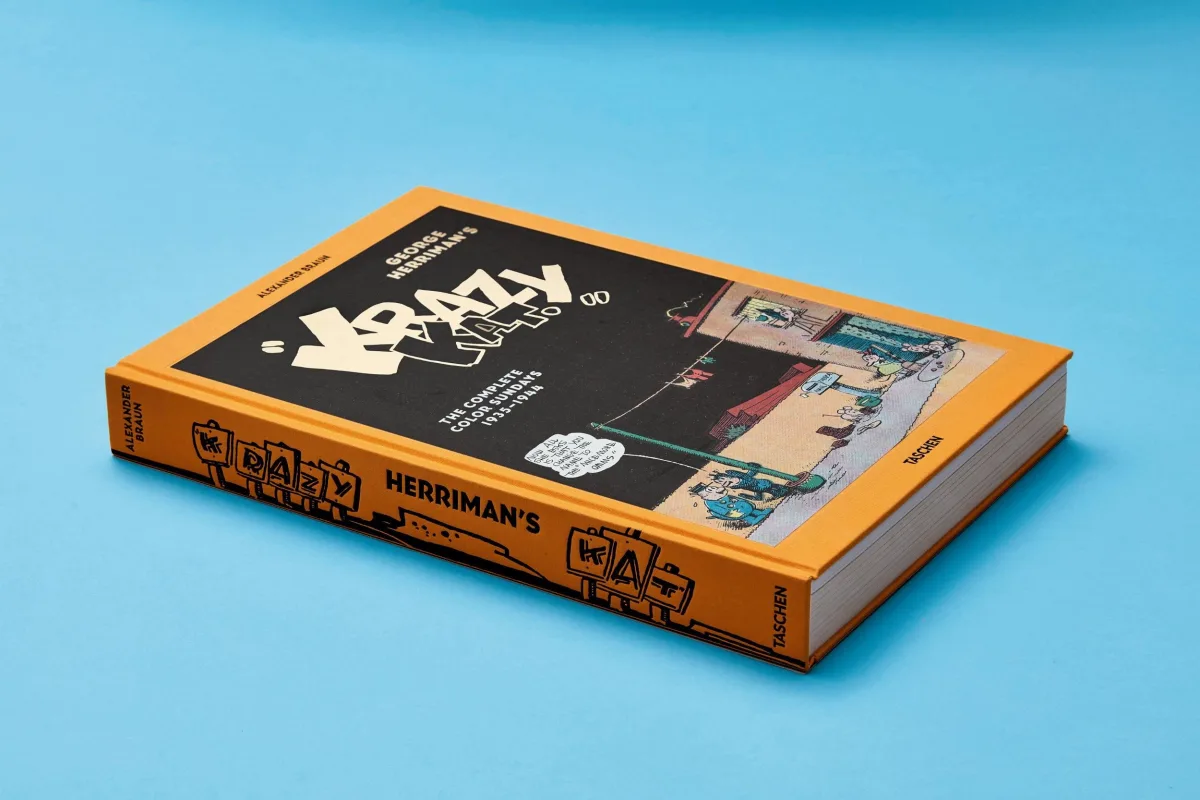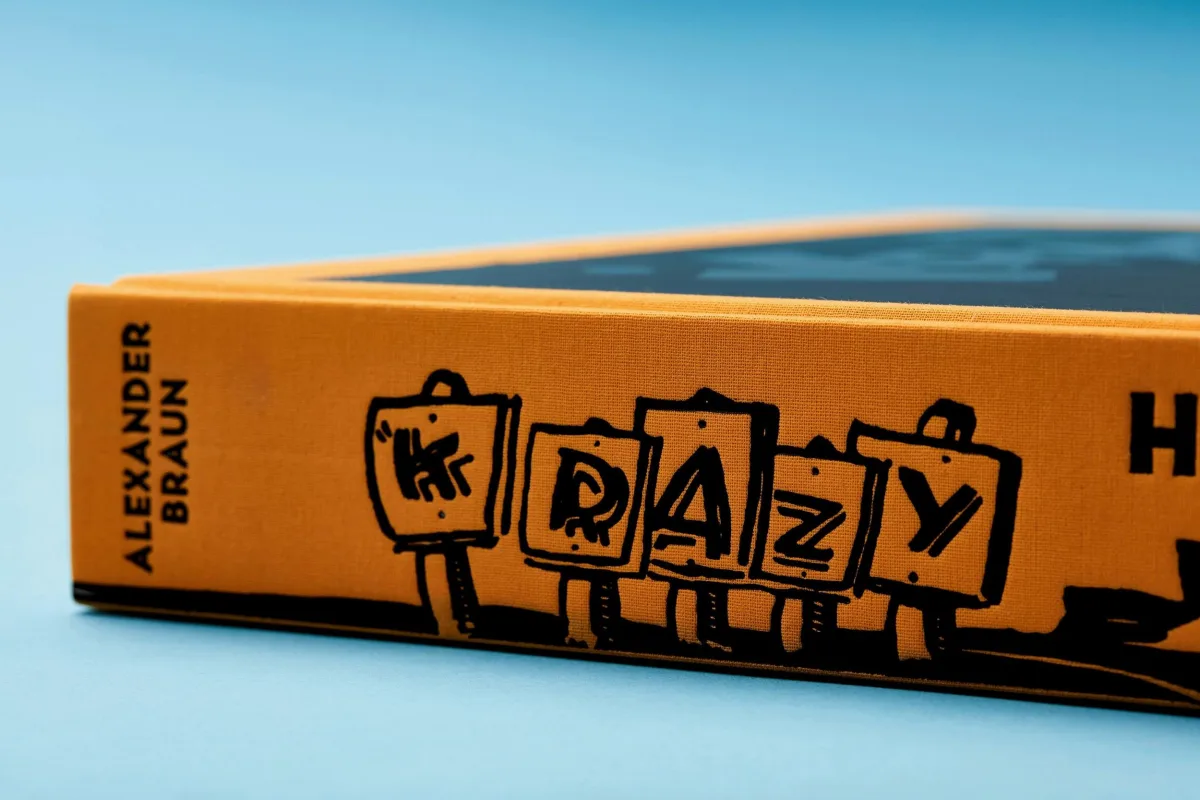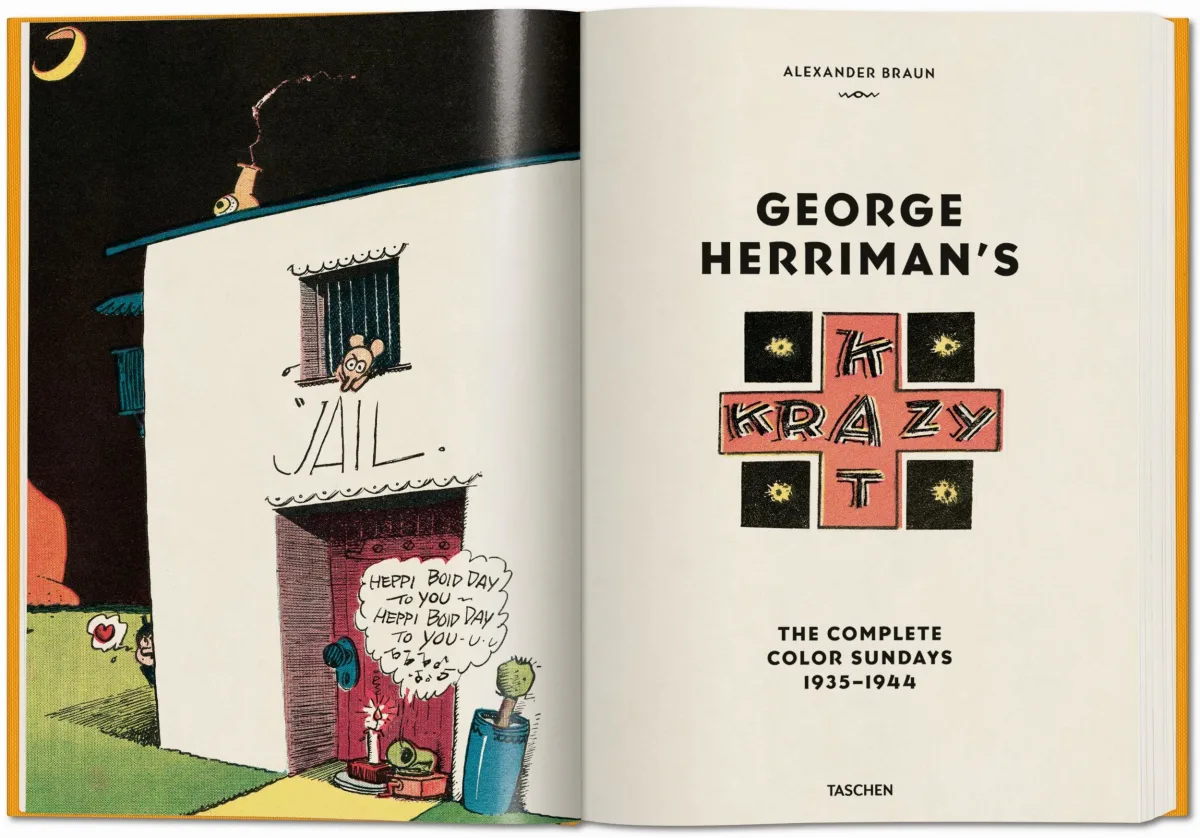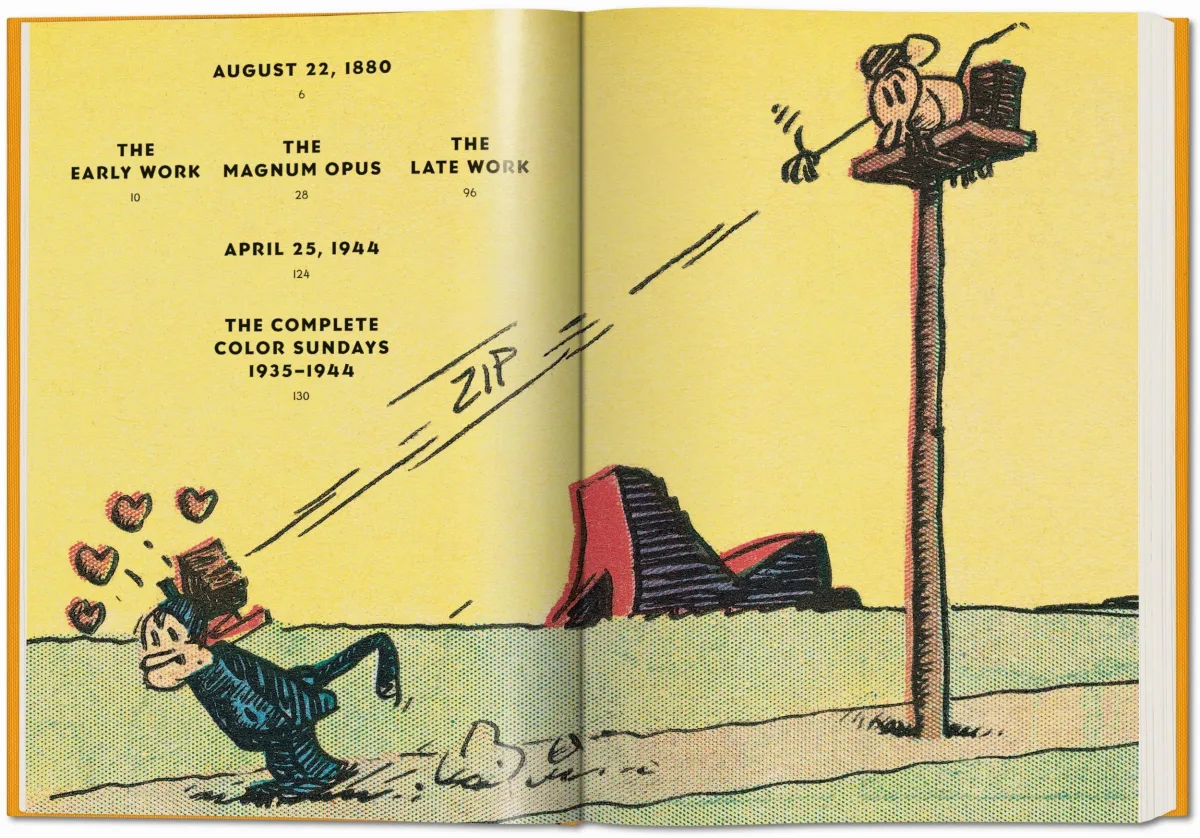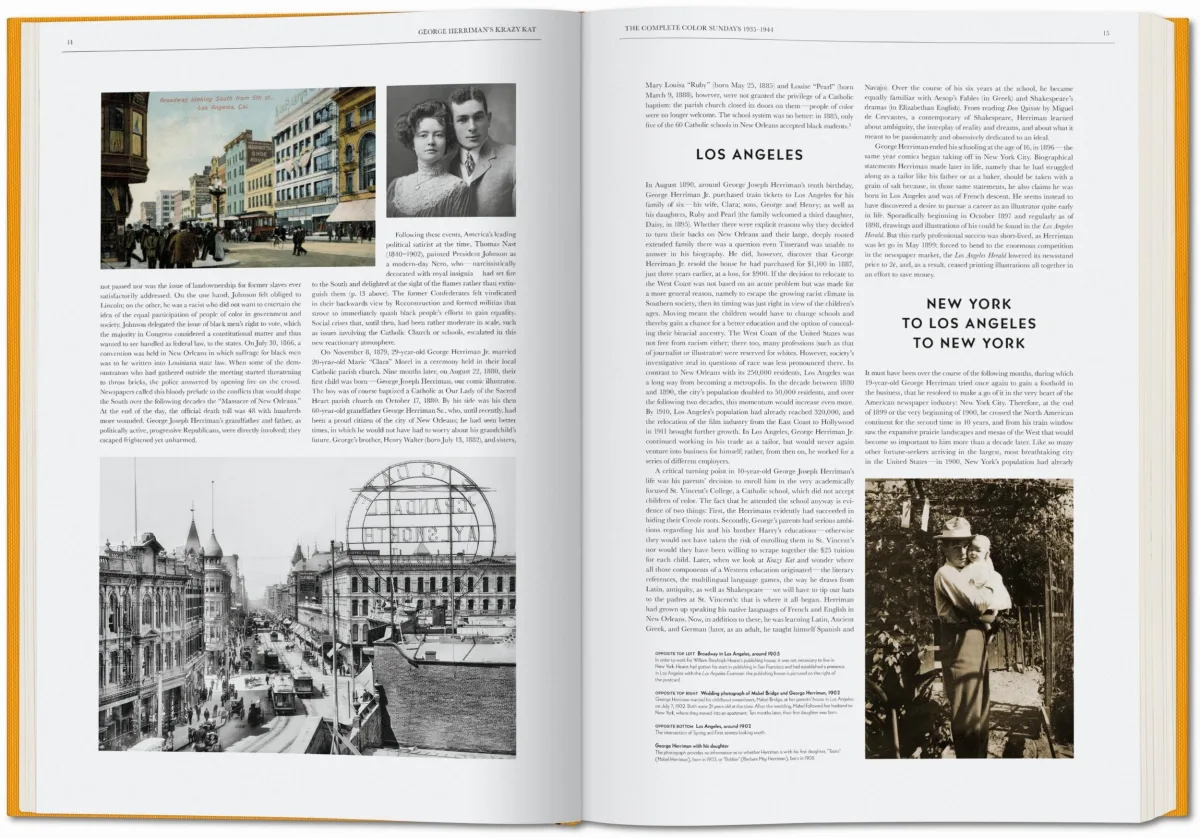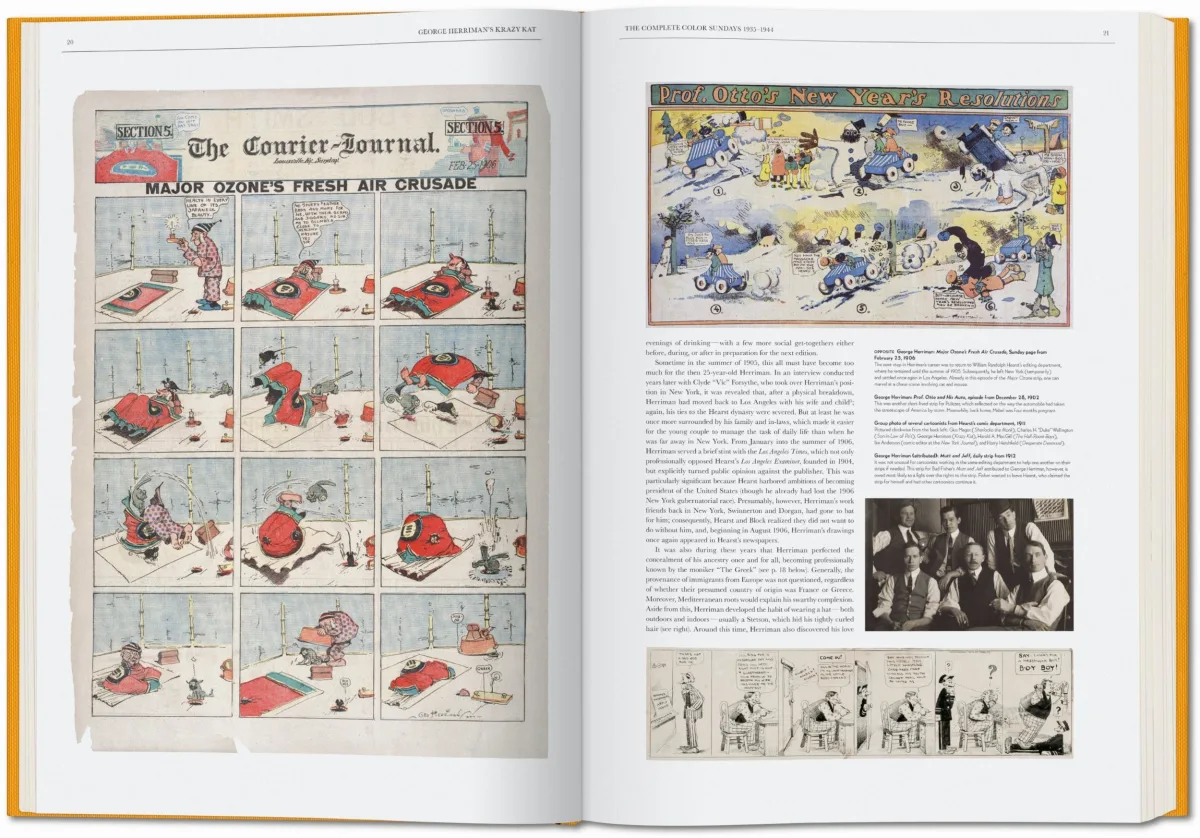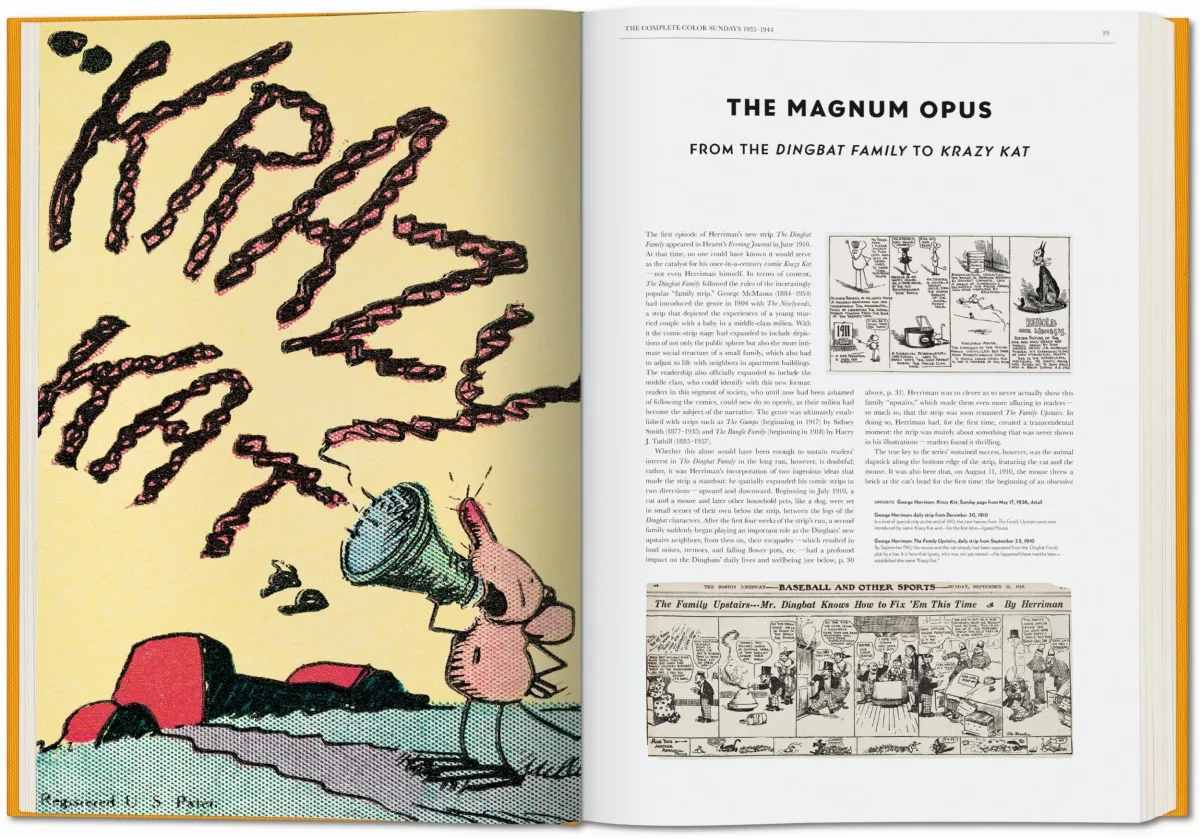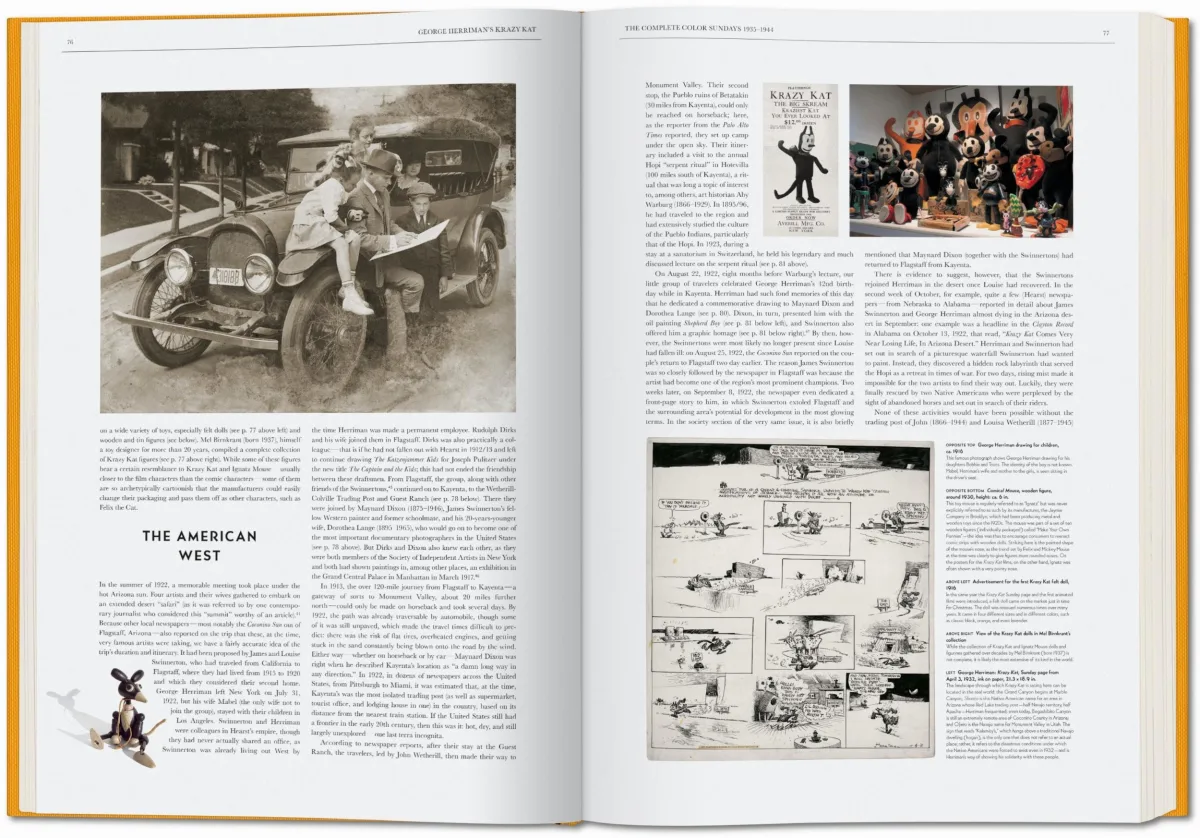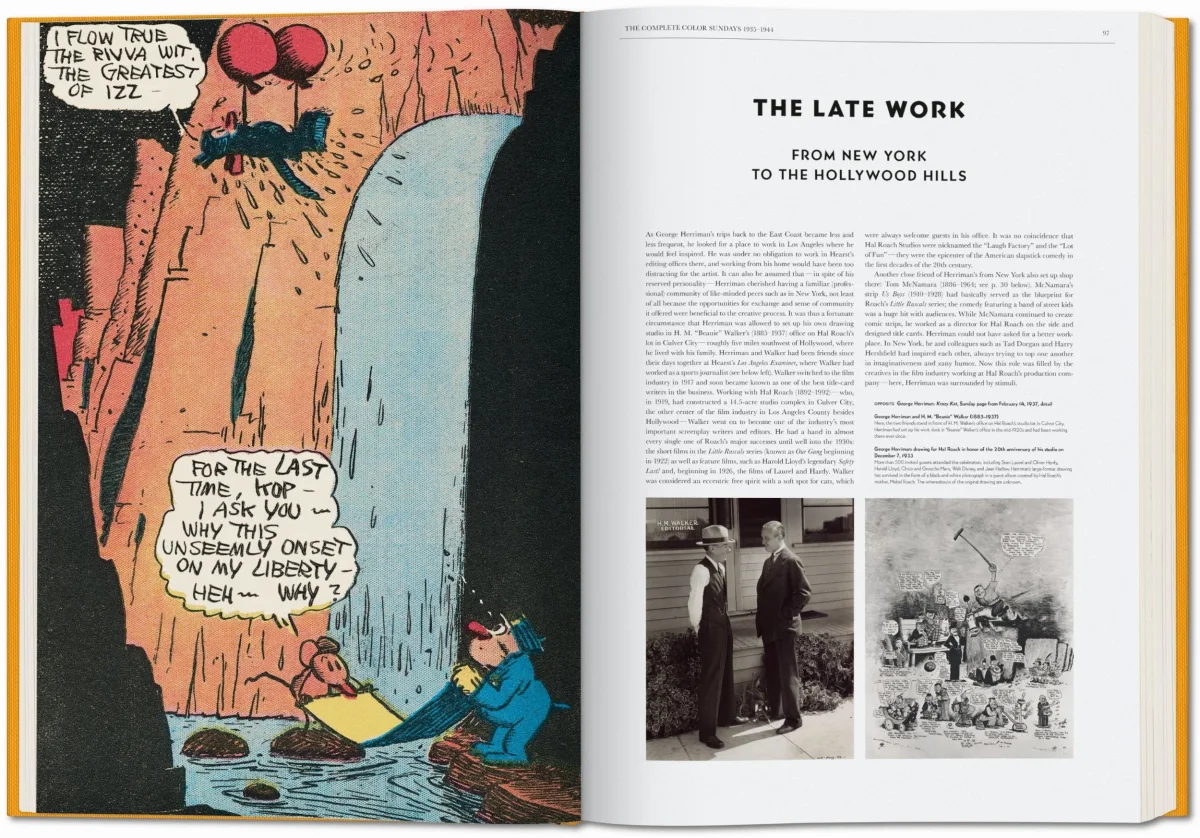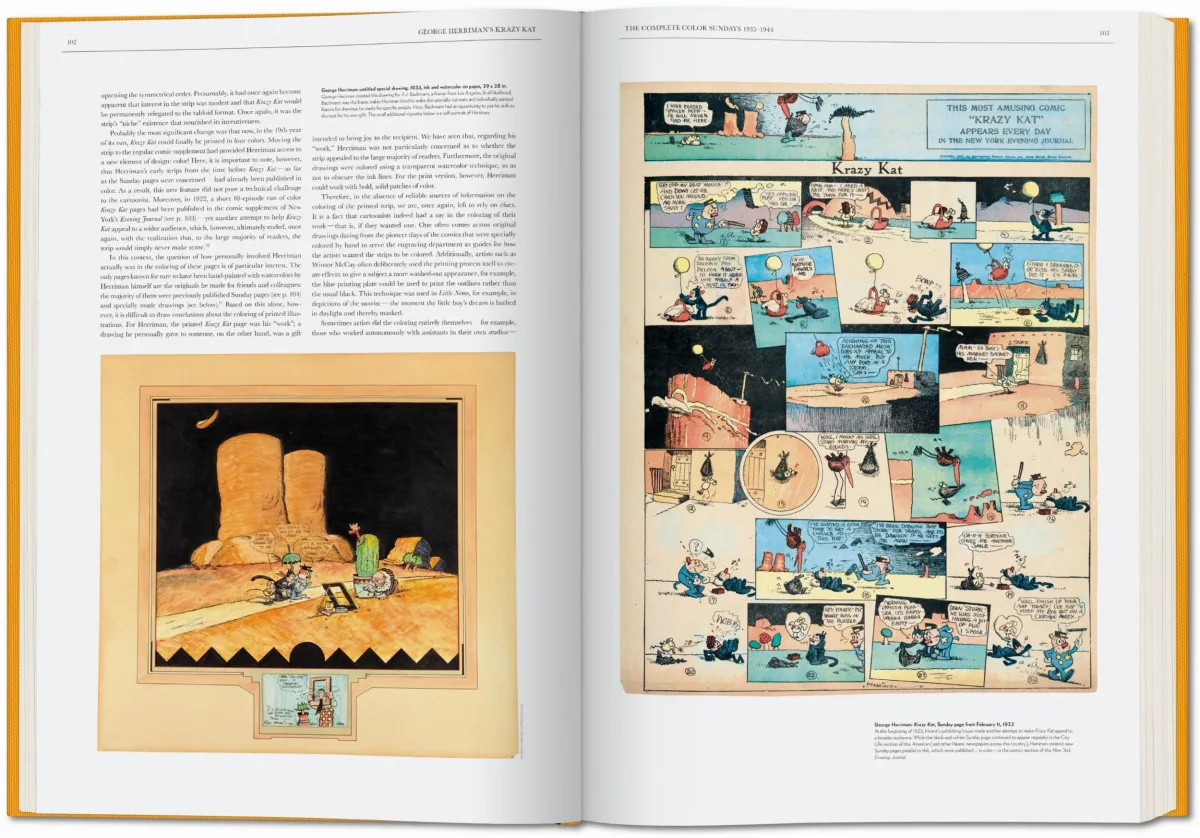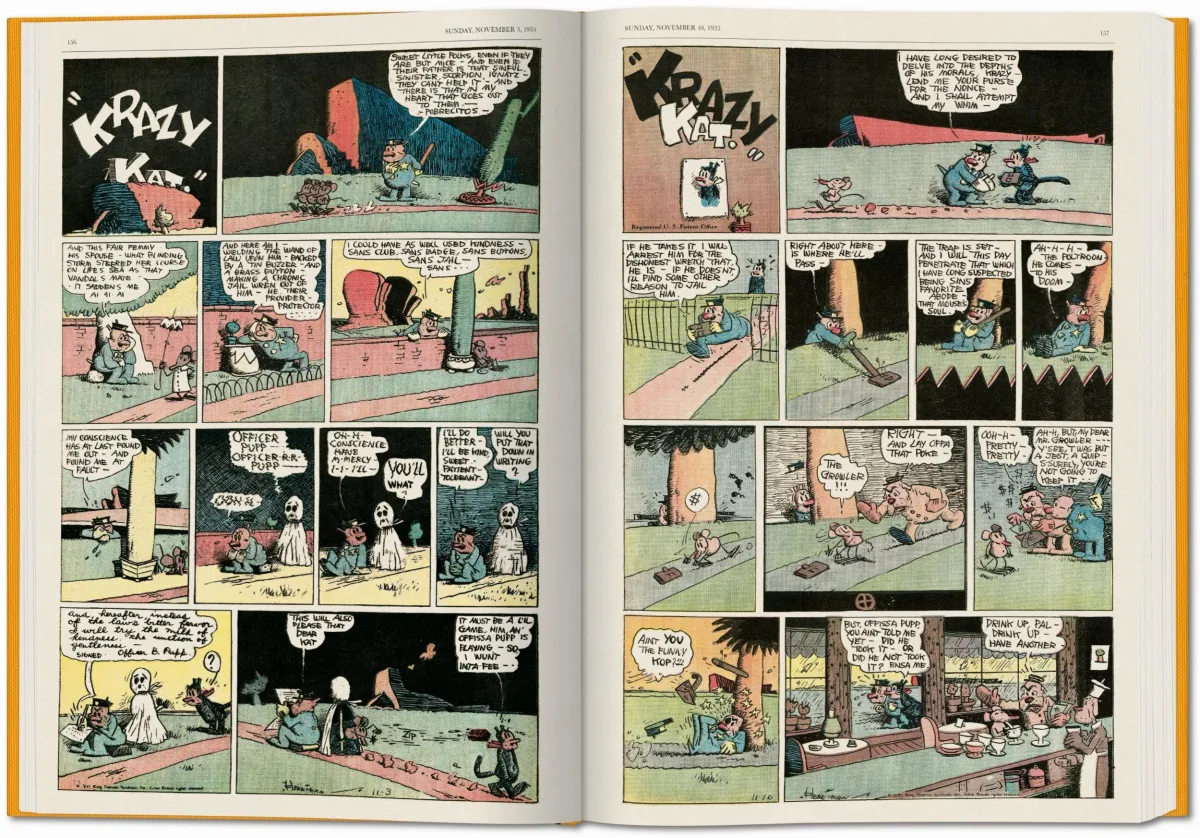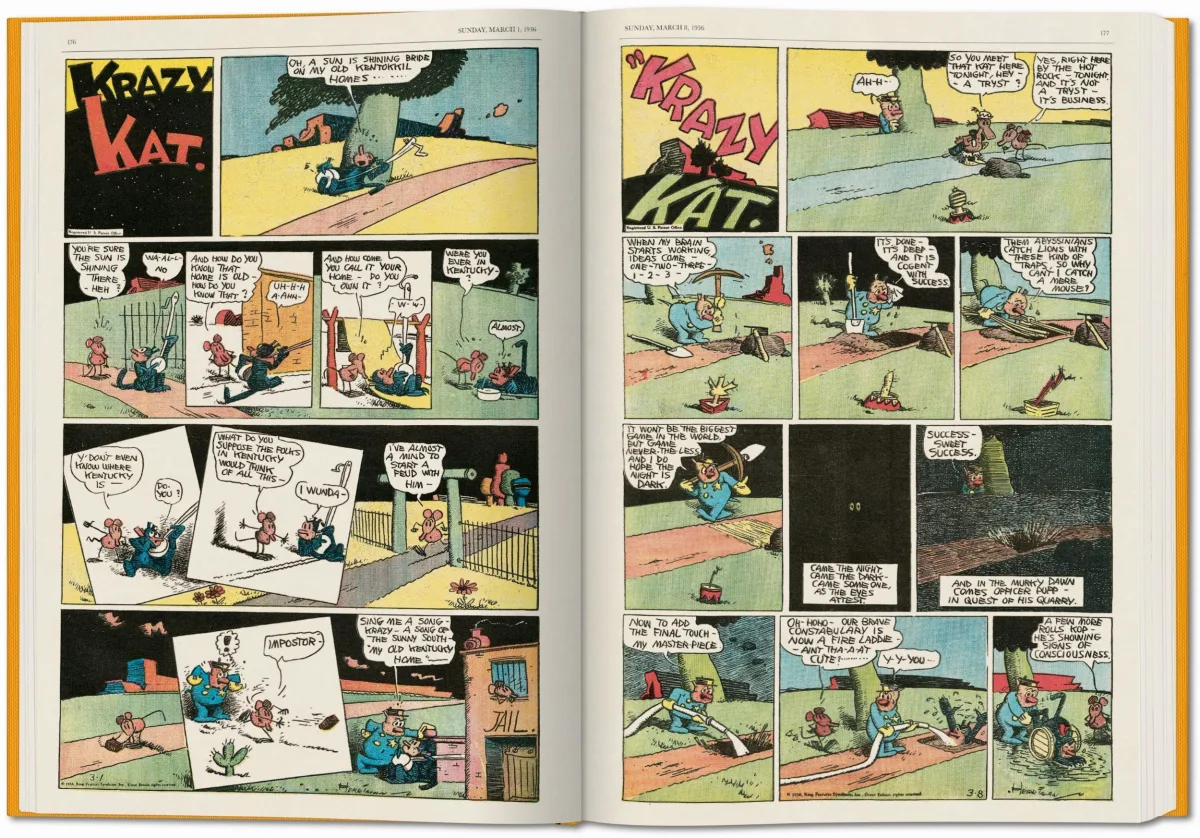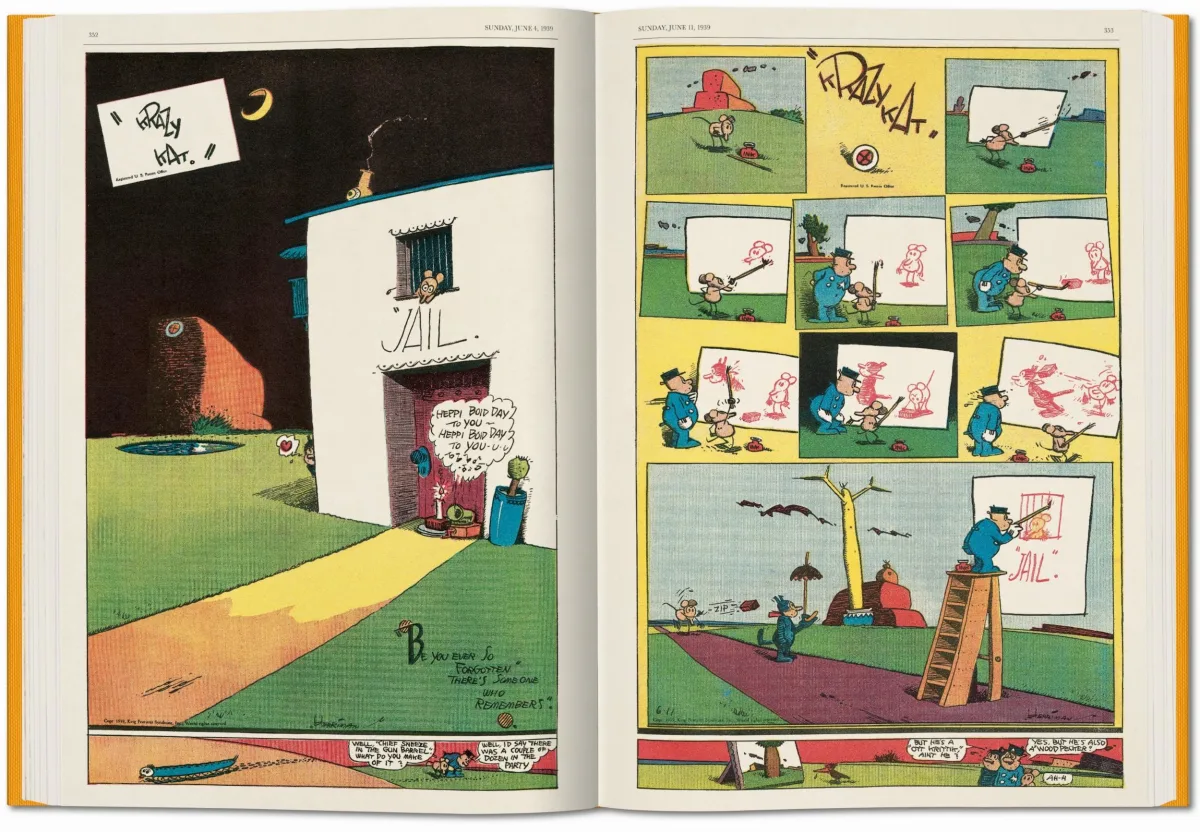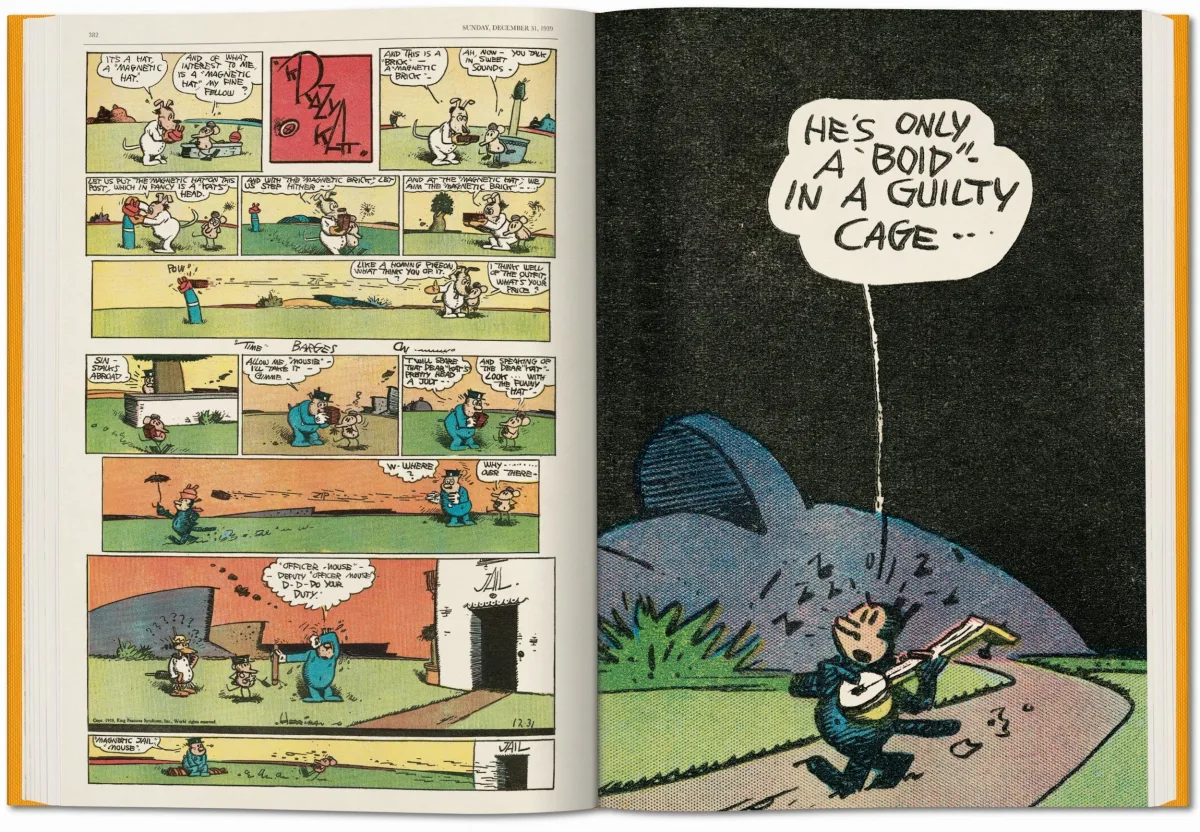1 / 16
XXL
XXL books are a minimum 39 cm (15.4 in.)
George Herriman’s “Krazy Kat”. The Complete Color Sundays 1935–1944
200
A color facsimile of the complete pages of George Herriman’s Krazy Kat 1935–44. One of the first comics to be considered a work of art, Krazy Kat delights with its detailed characterization and visual-verbal creativity alongside the slapstick shenanigans between Krazy and Ignatz the mouse. This volume comes with a 100-page illustrated introduction by Alexander Braun.
Winner of the 2020 Eisner Award, Best Archival Collection/Project—Strips
Winner of the 2020 Eisner Award, Best Archival Collection/Project—Strips
Clothbound, 11.8 x 17.3 in., 15.31 lb, 632 pages
“Krazy Kat is like no other comic strip before or after it. It was something better. It was art.”
XXL
XXL books are a minimum 39 cm (15.4 in.)

George Herriman’s “Krazy Kat”. The Complete Color Sundays 1935–1944
200A Brick Comes A-Flying
George Herriman’s classic Krazy Kat: the complete color stories from 1935–1944
The premise is simple: a black cat loves scheming a white mouse who incessantly throws bricks at the cat’s head, which police dog Officer Pupp, secretly harboring a passionate love for the cat, tries to prevent.
George Herriman endlessly plays with the above formula in his legendary newspaper strip Krazy Kat, published from 1913 until his death in 1944. Through his wit, detailed characterization, and visual-verbal creativity, Herriman introduced even the least comically-inclined to the young medium; Gertrude Stein, F. Scott Fitzgerald, Pablo Picasso, James Joyce, US President Woodrow Wilson, Jackson Pollock, Charlie Chaplin, Frank Capra, P.G. Wodehouse, Willem de Kooning—all KK fans among many others.
It was thanks to media tycoon William Randolph Hearst, a confirmed fan who gave Herriman carte blanche in his newspapers, that the artist was allowed to freely explore countless absurd and melancholy variations on the theme of unrequited love for years on end. Herriman unabashedly took advantage of this, radically exploring the medium’s potential and pushing all of its formal boundaries; readers had to put up with surreal, Dadaist sceneries, a language that whirled slang, neologisms, phonetic spelling, and scholarly references, and diffuse gender roles—making Krazy Kat probably the first gender-fluid star in comic history.
This volume presents all Krazy Kat color stories from 1935–1944 and a detailed introduction by comic expert Alexander Braun, who illuminates Herriman’s multi-ethnic background and reveals what makes this timeless work of art about a queer cat so extraordinary.
George Herriman endlessly plays with the above formula in his legendary newspaper strip Krazy Kat, published from 1913 until his death in 1944. Through his wit, detailed characterization, and visual-verbal creativity, Herriman introduced even the least comically-inclined to the young medium; Gertrude Stein, F. Scott Fitzgerald, Pablo Picasso, James Joyce, US President Woodrow Wilson, Jackson Pollock, Charlie Chaplin, Frank Capra, P.G. Wodehouse, Willem de Kooning—all KK fans among many others.
It was thanks to media tycoon William Randolph Hearst, a confirmed fan who gave Herriman carte blanche in his newspapers, that the artist was allowed to freely explore countless absurd and melancholy variations on the theme of unrequited love for years on end. Herriman unabashedly took advantage of this, radically exploring the medium’s potential and pushing all of its formal boundaries; readers had to put up with surreal, Dadaist sceneries, a language that whirled slang, neologisms, phonetic spelling, and scholarly references, and diffuse gender roles—making Krazy Kat probably the first gender-fluid star in comic history.
This volume presents all Krazy Kat color stories from 1935–1944 and a detailed introduction by comic expert Alexander Braun, who illuminates Herriman’s multi-ethnic background and reveals what makes this timeless work of art about a queer cat so extraordinary.
The author
Visual artist Alexander Braun (born 1966) has received numerous accolades and scholarships, and his work has appeared in several exhibitions. Alongside his independent artistic activities, he studied art history in Bochum and Berlin (his 1998 doctorate thesis was on the work of the American installation artist Robert Gober). Over the past two decades, Braun has compiled one of the most extensive collections on the history of comics. Since 2008, he has curated several museum exhibits on this topic, including a comprehensive retrospective on the work of Winsor McCay in 2012/2013. In 2011, he founded the German Academy of Comic Art.
George Herriman’s “Krazy Kat”. The Complete Color Sundays 1935–1944
Clothbound, 30 x 44 cm, 6.95 kg, 632 pagesDownload product images here
5
February 22, 2024
Huge. Thick. AmazingLauwers
December 10, 2021
Nach Little Nemo wieder ein sehr gut gelungenes Comic... Mit Witz und Sprache spielt der Autor. Ein Buch, wo unsere ganze Familie Spaß dran hat. Auch das Zeitungsformat begeistert. Wir freuen uns jeden Tag wieder. Danke.Colossal!
November 12, 2021
Tout amateur de bande dessinée devrait connaitre l'oeuvre de George Herriman. Son Krazy Kat est un chef d'oeuvre d'absurde et de poésie élaboré avec un minimum de détails: un chien, un chat et une souris sans pitié! Cette somme que publie ici Taschen est un exemple parfait d'érudition et de respect pour un auteur unique dans son genre. Voilà un livre-objet fascinant, d'une grande beauté et qui s'avère nécessaire dans l'histoire de la BD. Bravo!Aan absolute aanrader.
November 6, 2021
Een waanzinnig mooi boek, goed gemaakt, groot en zwaar maar nog handelbaar. Naast de strips ook heel veel biografisch materiaal. Een absolute aanrader.Excellent!
October 30, 2021
High quality publication, beautiful book. It's a pleasure to look at the drawings in this large size.Epochale Gesamtausgabe
October 29, 2021
Besser kann man dieses grundlegende Werk der Comickunst nicht präsentieren. Absolute Kaufempfehlung.
